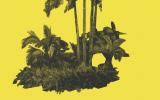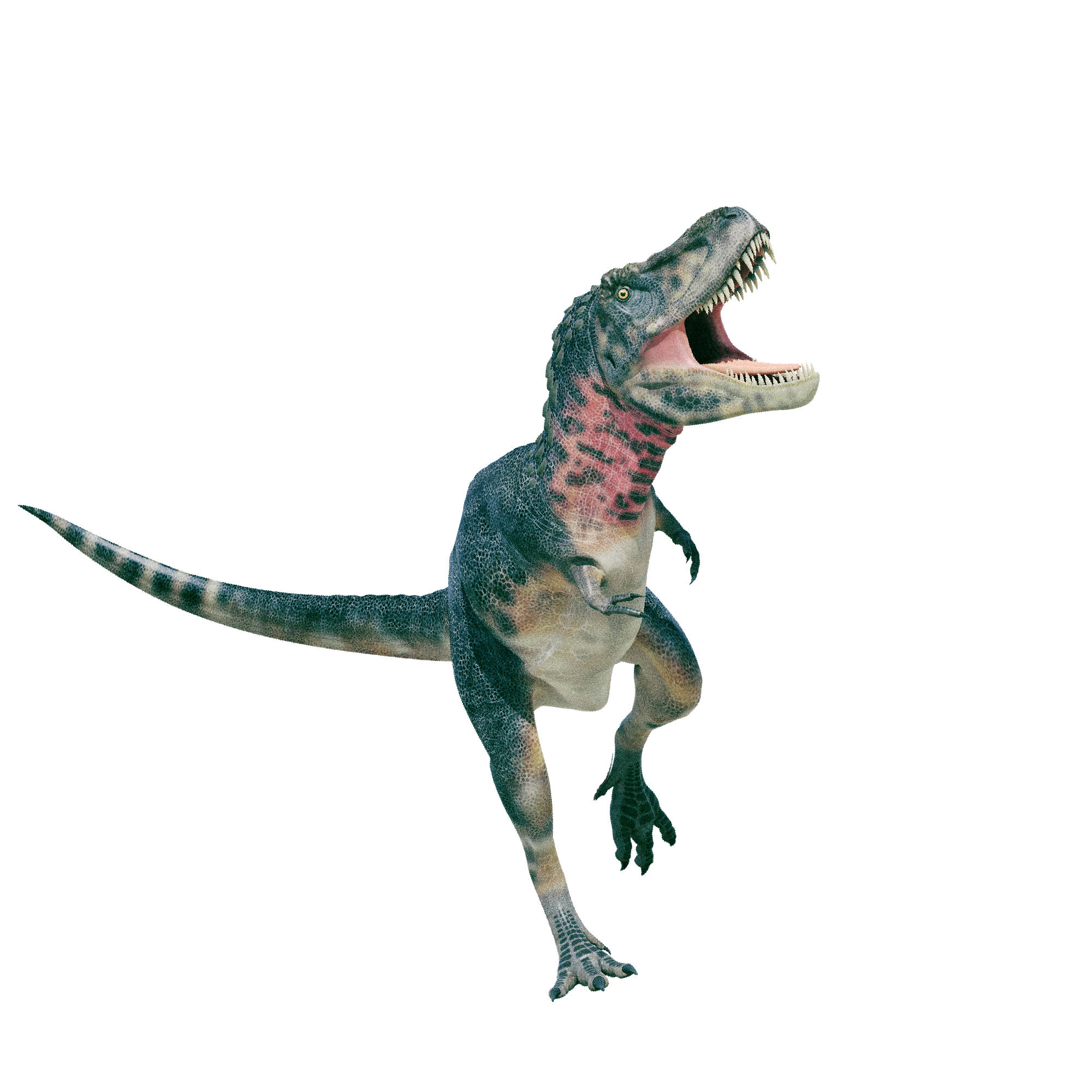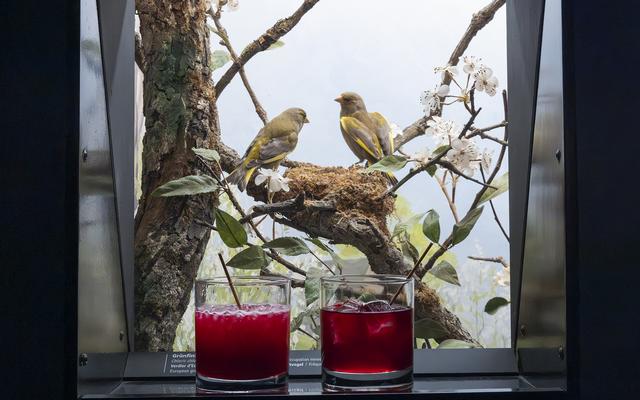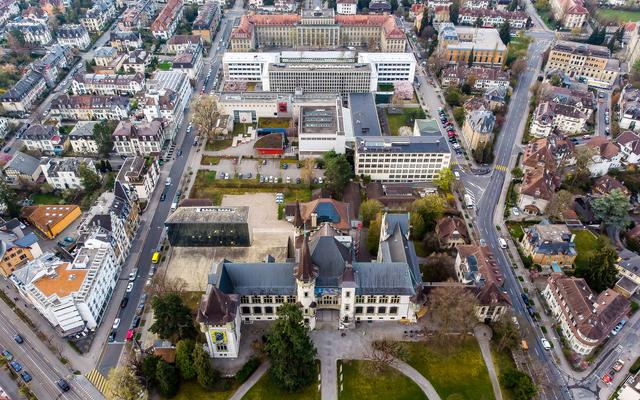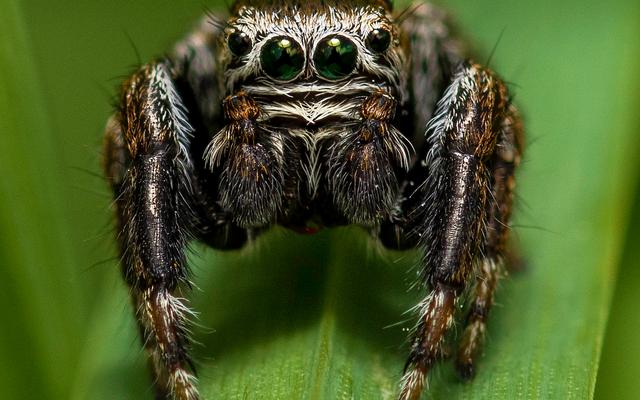Anyone who visits the new special exhibition: ‘T. rex – Do we know each other?’ at the Natural History Museum of Bern will find themselves on a journey through the late Cretaceous period. Visitors can experience enormous specimens of Tyrannosaurus rex and other dinosaurs up close. They open their mouths, make noises and were all created using the latest scientific findings. ‘T. rex – Do we know each other?’ is one of the most spectacular dinosaur exhibitions ever seen in Switzerland. It was produced by the Natural History Museum London and includes 15 dinosaur replicas, some of which use animatronics to move and produce sounds. There is also a life-size skeleton of T. rex, the king of the dinosaurs, that reveals its impressive bone structure.
We need to go back to the drawing board
A T. rex chases after a Jeep. This scene from the blockbuster ‘Jurassic Park’ is a typical example. Our notions about the world’s most famous dinosaur are not all from textbooks but also from popular culture. However, not everything portrayed is accurate: a Jeep could easily speed away from a full-grown rex.
The special exhibition: ‘T. rex – Do we know each other?’ reveals a multifaceted image of this popular beast based on the latest scientific findings. Every child has heard of it; it is known as the incarnation of evil, an image that has partly been shaped by films. But is it true? Around 50 fossils have been documented in the meantime. Thanks to new techniques, researchers are gaining an ever clearer picture of how this ‘king’ lived and what it looked like. T. rex had strengths that we wouldn’t expect – as well as surprising limitations. The Natural History Museum of Bern has reworked the content of the exhibition, presenting it in a fresh way.
Did you know that T. rex had an astonishingly large brain? Even when taken in relation to its body, it is still comparable to the brain of a chimpanzee – and larger than those of cats and dogs. Its closest relations, birds, also have roughly the same intelligence as apes. However, T. rex was not particularly fast. Skeletal analysis has shown that an adult T. rex would not have been able to reach speeds of more than 20 km per hour – significantly slower than a human sprinter. Computer simulations show that at higher speeds, the bones would simply buckle.
Scientists have recently brought many new facts to light about the fascinating predator: for example, it is now disputed that T. rex was only a hunter – it probably also ate carrion. Much as lions and wolves do today, it probably went for whatever prey was on hand – whether alive or already dead. Its powerful appearance also made it easy for it to drive other carnivorous dinosaurs away from their spoils.
The James Dean of dinosaurs
T. rex was a full-on carnivore which must have eaten more than 100 kg of meat every day. This is the only way it would have been able to achieve its enormous growth between the ages of 10 and 20: it would have begun the size of a dove and ended at the height of a giraffe. Previous fossils have shown that it didn’t live past the age of 30. You could call T. rex the James Dean of dinosaurs: living fast and dying young.
Our kings – Switzerland’s saurians
T. rex fossils have only been found in what is now the west of North America and in Canada. In the Cretaceous period, the Atlantic grew wider. The American and European continents had already separated: T. rex would not have been able to reach Europe, and therefore cannot be found at our latitude.
In the Mesozoic Era, however, Switzerland was a seaside nation. For almost 200 million years, the region lay both under and near the sea. Ichthyosaurs, crocodiles and other terrifying Helvetians reigned here. The Natural History Museum of Bern has expanded the exhibition with an additional section: ‘Our kings – Switzerland’s saurians’.
It includes spectacular finds – real fossils – taken from the museum’s storage rooms and provided by private lenders. Visitors can see the remains of a sea crocodile that was discovered in an erratic block in the nearby Egelsee lake, or a vertebra from an ichthyosaur – the most recent saurian fossil from the Swiss Jura Mountains. The section also includes a copy of the double set of tracks of a huge predatory dinosaur that was found in the middle of what is now the Transjurane motorway (A16) – traces of what is known as the ‘Swiss T. rex’. The tracks suggest that the therapod was about the size of the real T. rex. We don’t know what this local dinosaur looked like – no bones were discovered.
During the exhibition, a temporary café with small snacks and a shop will be located in the gallery of the exhibition space.
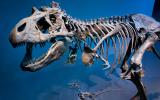
Railaway: Special discounts at http://sbb.ch/t-rex
Prevent queueing at the entrance and get your ticket in advance on www.starticket.ch
Guided tours: Book a private guided tour at www.nmbe.ch/en/our-offer/your-event
Schools: Registration is mandatory for exhibition visits and workshops.
«T. rex - Kennen wir uns?»
- Gesamtleitung
-
Christoph Beer
- Projektleitung
-
Katharina Weistroffer, Dora Strahm
- Administration
-
Marlis Gerteis
- Szenografie
-
Peter Auchli
- Grafik
-
Thea Sonderegger
- Kuration
-
Ursula Menkveld
- Bauleitung
-
Stephan Schlup
- Technische Leitung
-
Christian Bähler
- Marketing und Kommunikation
-
Sonja Delz, Anna-Pierina Godenzi, Simon Jäggi
- Vermittlungsangebot
-
Andrea Röhrig, Beatrice Baeriswyl, Martin Ryser, Katharina Lienhard
- Finanzen, Controlling
-
Erich Stettler
- Koordination NHM London
-
Tristan Menner, Felicity Sylvester, Sarah Stewart
- Ausstellungstexte
-
Simon Jäggi, Ursula Menkveld
- Übersetzung
-
Tanja Brasseur Wibaut, Supertext AG, Zürich
- Lektorat, Korrektorat
-
Elsa Obrecht, Barbara Lewis, Christoph Gerber
- Wissenschaftlicher Beirat
-
Stefan Hertwig, Manuel Schweizer
- Ausstellungsbau
-
Stephan Schlup, Markus Holzer
- Ausstellungstechnik, Beleuchtung
-
Christian Bähler, Mark Bähler, Denise Mast
- Multimedia Konzept
-
Peter Auchli
- IT-Support
-
Nathalie Niederhauser, Robin Santos
- Präparate
-
Martin Troxler, Constantin Latt, Berhard Hostettler, Gino Bernasconi, Mich Häni
- Aufbau Dinosaurer
-
NHM London: Alexander Rae, Robert Lewenstein, Malcom Skellington
NMBE: Fabian Neisskenwirth, Stephan Schlup, Markus Holzer, Reto Küng, Mark Bähler
- T. rex Shop
-
Thea Sonderegger
- T. rex Café
-
Marlis Zaugg
- Videoinstallation
-
Hugo Ryser, Samuel Radvila, Manuel Schüpfer (Optickle GmbH, Bern)
- Soundinstallation
-
Werner Hasler - the outer string
- Lichtplanung
-
Mica Ostermeier (matí AG Lichtgestaltung, Adliswil)
- Fotografie
-
Lisa Schäublin
- Beteiligte Firmen
-
Affolter Transporte AG, Schüpfen
Burkhard & Co. AG, Gümligen
Crystal Display Electronics AG, Altendorf
Daniel Stern Bodenbeläge, Köniz
Petter Gaffuri AG, Bern
Lettra Design Werbetechnik AG, Bern- Liebefeld
Grossleinwand.ch by Wolf-Media, Wiliberg
Overdrive Music (MusiX AG), Bern
Steiner Blech und Metallbau AG, Bern
Serigraphie Uldry AG, Hinterkappelen
- Wir danken!
-
Fondation Paléontologique Jurassienne Glovelier
Jurassica Museum Porrentruy
Muséum d’Histoire naturelle Neuchâtel
Naturhistorisches Museum Basel
Paläontologisches Institut und Museum Zürich
Sauriermuseum Aathal
Sauriermuseum Bellach
Sauriermuseum Frick
Straussenhof Hofmann, Worb
John Hutchinson, Royal Veterinary College, University of London, GBR
Phil Bell, University of New England, Armidale, AUS
Sabrina Beutler, Tierpräparation, Düdingen
Dominic Gascho, Institute of Forensic Medicine, University of Zurich
Timothy Larson, Black Hills Institute of Geological Research, Hill City, USA
- Trägerschaft
-
Burgergemeinde Bern
Für Schulen und andere Gruppen
Schulklassen können die Ausstellung nur Vormittags besuchen – die Anmeldung über unsere Webseite ist obligatorisch. Zusätzlich bieten wir speziell für diese Ausstellung eine Lehrerfortbildung und einen Workshop für Schulklassen an.
Alle Gruppen und Kitas können die Ausstellung ohne Voranmeldung besuchen.
Melden Sie hier ihre Schulklasse für einen Ausstellungbesuch an.
Melden Sie hier ihre Schuklasse für einen Workshop an.
Melden Sie sich hier für eine Weiterbildung für Lehrkräfte an.
- —
VERANSTALTUNG
Führungen hinter die Kulissen: Schlupfwespen – die Aliens im Insektenreich
- —
VERANSTALTUNG
Führungen hinter die Kulissen: Schlupfwespen – die Aliens im Insektenreich
- —
Rahmenprogramm «Mensch, Erde! – Das Klima im Wandel»
